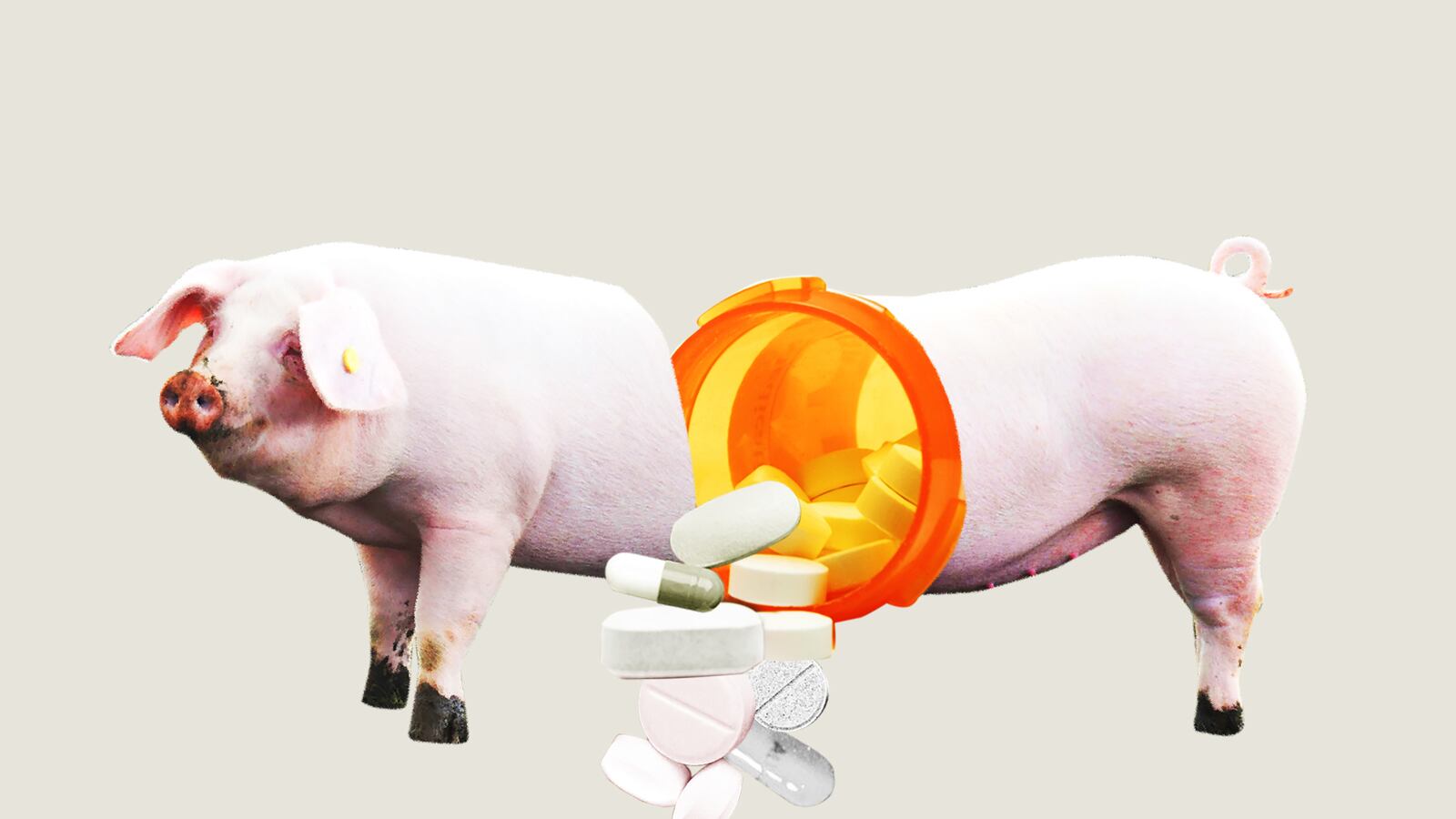In an attempt to slow down mankind’s relentless march to ever more antibiotic resistance, the FDA has found someone new to pick on: farmers.

Long aware of the enormous amount of antibiotics shoveled into livestock prior to their entry into the food-chain, the Food and Drug Administration is “implementing a voluntary plan with industry to phase out use of certain antibiotics” used to “enhance food production.” In gov-speak, this is a long-awaited attack on yet another unregulated mess that contributes to human disease; in human-speak, this is a wimpy half-assed tip-toe around a critical problem. But for now it will do.
It turns out that less than half the antibiotics produced each year are intended for humans—most estimates place the number at 20 percent for people and 80 percent for farmed animals (including fish). In general, the antibiotics are thrown into feed and into drinking water in hopes of “enhancing growth.” The pursuit of animal enhancement arose from studies made at the dawn of the penicillin era. In the late 1940s and early 1950s, scientists observed that animals fed the new wonder drug, penicillin, grew better than those that did not. This eventually led to articles like, “They’ve Doubled Gains with New Drugs” in the trade magazine Successful Farming and, since then, there has been no looking back.
Interestingly, no one is certain exactly how growth enhancement occurs—theories have included the notion that the antibiotics treat subclinical animal infections or otherwise offset the non-hygienic conditions of your local abattoir, leading to healthier and therefore meatier livestock. Others have suggested that perhaps the antibiotics are exerting their effect through a different pathway, something more akin to the performance enhancement benefit one sees in certain professional athletes taking this drug or that. And there is a growing group of scientists who believe that the doubling of beef per cow and pork per pig from penicillin and its descendants may have been true in the wayward 1950s but no longer reflects the situation.
In other words, these days, the antibiotics are being given because of tradition, not fresh evidence.
No matter the reason and no matter the effectiveness—it is clear how antibiotics, when given by the ton to pigs and cows, cause human trouble.
The bacteria in the bowels of livestock are influenced by the antibiotics gobbled up. Just as with people, antibiotics kill off all the susceptible bacteria, leaving only drug-resistant bacteria. And—guess what—slaughterhouses turn out to be not so perfectly hygienic. When a pig or cow is slaughtered, some of the bacteria from the animal intestine ends up here and there and all around, eventually surfacing in your breakfast sausage links or McBurger. And if that bacteria has encountered too much antibiotic in livestock feed and has developed antibiotic resistance and you eat it..oy vey.
This cycle of animal to human bacterial transmission—and most importantly, resistant bacteria transmission—has been well characterized in the medical literature with Salmonella and E coli and in the lay literature as well. Europe recognized the problem a few decades ago and banned antibiotics given for growth promotion in livestock, first in Northern Europe and then, in 2006, for the entire EU. The action this week of the U.S. FDA is certainly welcomed, even if a little late and a little tepid. Surely the unruly use of antibiotics in animal feed can and must be curbed.
But even though animals are getting the lion’s share of the antibiotic tonnage, the exact contribution of this improvident indulgence to the critical problem of our fading antibiotic patrimony is uncertain. Though admirable, the FDA’s action should not distract from the larger issue at hand: yes, we are giving too much antibiotic to pigs, but the real issue is that humans have been so piggish about prescribing and requesting and gobbling antibiotics—in hospitals and doctor’s offices and drive-through urgi-centers and through the mail. We are addicted as a nation not just to opiates but to antibiotics—and as with other addictions, sooner than later, the party always ends.






